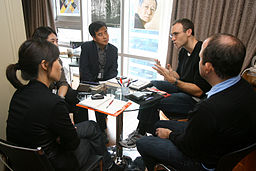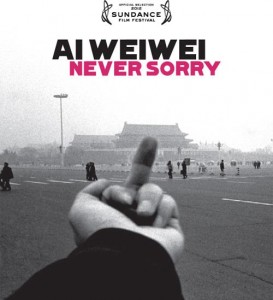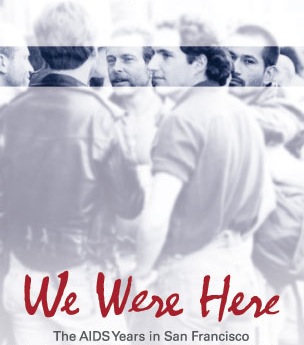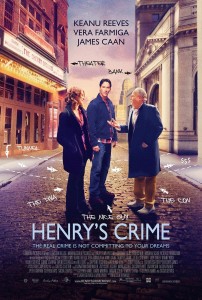
Premiere to Release-Why does it take so long?
Written by Orly Ravid
Now that Sundance has announced its new line up, it seems appropriate to discuss the issue of a film’s distribution after premiering or acquisition at festivals.
It is often the case that films do not get released until 6 months to a year or even more from when the film had its festival premiere…At least this is the case when traditional distribution is pursued as opposed to planning the distribution and marketing to coincide with the premiere and work off that plan accordingly.
Here are 10 reasons for the delay in time between a premiere launch at a festival and traditional distribution into the marketplace:
1. The time it takes to find buyers. These days the market cycle is longer than it’s ever been. Sometimes even a year after a festival or market, sometimes longer to sell titles. It’s a buyer’s market, so few films enjoy the pleasure of contested bidding that forces prices up and faster closings. Sundance, of course, is one of the few festivals that commands such a dynamic and more films than at most other festivals will secure distribution, at least domestically, as a result of premiering there.
2. Once a deal is closed, then there’s the contract and delivery which takes time… months sometimes.
3. Long lead times for press are required, at least four months, and that planning usually does not happen until after deal closure.
4. The distributor needs time to find open slots/appropriate slots in the calendar for theatrical – and it’s competitive out there so getting a booking takes time, and getting the right one for the film takes even more time, again, months. Sometimes even 6 months is needed to book the right theatre for the right time.. Some of the best screens are locked in well in advance.
5. Cash flow is needed to launch marketing campaigns. This can be an issue for some distributors. Recouping some revenue from previous releases will be needed in order to fund future ones.
6. Major digital outlets take several months to upload and make a film available. Cable VOD has solicitation windows. DVD and digital also require set up times and announcing the title and marketing it ahead of time so again months of planning and slotting. One wants to be strategic about release time.
7. The time of release is sometimes specific to the film. It may be theme driven and demand specific timing or it may want to avoid direct competition. Also inventory shifts in retail stores dictate the optimal time for DVD release (ie. certain times of year, like Christmas or Halloween, call for more of a certain kind of film).
8. Internal scheduling of the distributor. As you know, distributors will have other releases that they need to navigate given what their key outlets have planned.
9. Grass roots and other marketing also demand lead time.
10. Overall, the difference between DIY and traditional distribution is that in DIY, you can plan months in advance to set up the outlets and use the press attention at a festival premiere to catapult the film into the market, even if you aren’t 100% sure which festival will be your premiere. Having everything in place to pull the trigger when you get that acceptance puts you in a good position to release. In traditional distribution, the distributor cannot do advance planning and so the planning starts after the initial buzz has been created at the festival.
I know some of you have been confused or frustrated by the lag time between a festival premiere of a film and the release. Hopefully this helps to explain the matter.
Orly Ravid November 30th, 2012
Posted In: Distribution, Film Festivals, International Sales, Uncategorized
Tags: cable VOD, DVD release, film distribution, film promotion, film sales, independent film premiere, independent film release, Sundance Film Festival, theatrical release, traditional film distribution
One key point on film sales
In light of the American Film Market just wrapping up and Sundance on the horizon, we thought we would devote some time to explaining how film sales works and what the landscape is looking like for independent films at the moment. Many of you may not truly be aware of how a sales agent relationship works. Indeed, by conversations we’ve seen on forums and in social media spaces, many newer filmmakers do not understand the repercussions of signing a sales agent agreement for their films.
Typically sales agents do not act like real estate brokers, but more like intermediary distributors. What I mean is they do not facilitate a deal that a filmmaker does directly with third parties and then charge a commission that gets paid out as does a real estate broker. Typically, sales agents first license all the rights from a filmmaker (meaning they then possess all the rights, meaning the film isn’t yours to control during their agreement term) and then re-license them per territory or in a worldwide deal depending on the territory they have been assigned to sell in contractually. The agreement is between the agent and the buyer, not between the filmmaker and the buyer. Often sales agents’ terms are 20 years, or 15, 12, 10, 7, but rarely less than 7 and the more old school ones are longer. The reasoning is that they need the rights to be able to sell the rights. So for at least 7 years, the film is no longer in your possession and by the time you get control of it again, it is indeed considered an old title.
There are some advantages to working with a sales agent of course. They will spend money traveling to markets, producing sales materials, courting buyers and they handle all delivery and oversee the distributors they’ve signed agreement with, keeping a watchful eye and monitoring accounting. Sales agents usually have better buyer contacts than most filmmakers and more leverage, and they have more market intelligence. Bear in mind that they front this money for the film (that they own for a time), but it all must be recouped from the sales revenue with sales commission before any is passed back to the filmmaker. There are also times when the delivery items (also known as deliverables in a sales agent agreement) must be completed and paid for BEFORE the agent will take it out to buyers. In some cases if this hasn’t been delivered upon signing the agreement, an agency may pay to have these items fulfilled if they find a buyer who requires them (like 35mm prints) and the deal is large enough to recoup this additional cost plus commission.
The taking rights component is an issue because these agreements last for a number of years and the filmmaker is shut out of much or all of festival distribution and the ability to conduct direct distribution efforts (internet distribution) plus all the rest. I’ve written all this before; and many seasoned filmmakers already know it, but I write it again to remind of one key thing during this AFM/film sales season: DO THE MATH.
At The Film Collaborative we do sales too, sometimes, in a very boutique fashion. We spend little at markets; we sell only certain strands of films that we have lots of experience in handling. We do NOT take rights ever and the deals are, almost always, between the BUYER and the FILMMAKER. Rare exceptions are when we are doing a bulk TV deal and even then filmmakers still have 100% approval and collect within a few days of us having collected from the broadcaster.
There’s more that can be said about the specifics of sales and samenesses v. differences between our model and the traditional one, but the point is to remind of this one key point: Oftentimes the potential deals that a traditional sales agent can do for you and what you can do for yourself or with us are the same, but the math (because of fees and expenses) will net you less.
There are times when certain types of films have a certain sales potential that may be better served by a motivated sales agent who has the cash to augment the deals and can command more and stand better to collect etc. But most of the time, for indies, the deals these days are so few and far between and for such small prices that if one does not pick a company that follows our model, one will get screwed. Sometimes, the screening fee from festival distribution is the same or more than the sales money (yes, screening fees can be negotiated!). Sometimes the benefit of DIY distribution by the filmmaker can net more than an MG on a sale. Sometimes there are no sales. Sometimes the expense recoupments due to a sales agent exceed the sales revenue. So the key is get real sales projections, back up with corroborating information, and DO THE MATH. Admittedly, this is no easy feat these days and sometimes the sales potential isn’t pretty.
Sometimes films represented by veteran agencies do the exact same deals we do, but instead of the filmmaker getting the money directly from the buyers, it passes through a sales agent who recoups expenses and higher fees such that the net is ultimately less to the filmmaker, who cannot even exploit any rights to her own film.
Before signing agreements with sales agents, ask the agent about the sales potential of your film, the one they are asking to represent (and own for a time). Ask to see the projections in writing and analyze that they really are comparable films (genre, actor names, topic, timeframe of the sale should be in the last year or two, not 5 years ago when the film world was very different). Ask about their intentions for marketing your title, beyond designing a one sheet and perhaps a new trailer. Ask how many films they are representing this year at the markets and will your title get its proper attention. Beyond the markets, will your film be promoted in any other way (publication coverage, special screenings, social media outreach, highlighted on their website and in their weekly email blasts)? Think if it will be worth it to relinquish all rights to your film for at least 7 years. Be in reality about the real sales potential of your film, do the math, and make your decisions accordingly.
Orly Ravid November 13th, 2012
Posted In: Distribution, International Sales
Tags: American Film Market, film buyers, film distribution, film distributors, film markets, film sales, film sales agent, film sales agreements, Sundance Film Festival
Tribeca Wrap up
by Bryan Glick
Sandwiched in between SXSW and Cannes, it is very easy to dismiss or overlook the Tribeca Film Festival. Yet, last year’s crop of films included the world premieres of two of the highest grossing documentaries of 2012 Bully and Jiro Dreams of Sushi. However, most buyers seemed much more hesitant to strike this year.
Part of the issue is that Tribeca Films went all out acquiring The Giant Mechanical Man (starring Jenna Fischer and Chris Messina), Sleepless Night (France, estimated budget €2.5m) , Struck By Lightning (with Christina Hendricks and Dermot Mulroney), Booker’s Place: A Mississippi Story (documentary), War Witch (Canada, estimated budget $3.5m), Resolution (estimated budget $1m), Side By Side (documentary, produced by Keanu Reeves) and Death of a Superhero (Germany/Ireland, estimated budget €3.8m) (The latter two premiered at Berlin and TIFF), so most major buyers settled for one title or none at all.
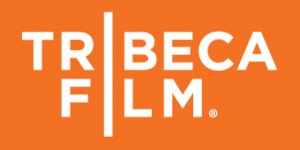 Outside of Tribeca Films, Sundance Selects and IFC Midnight were among the most active buyers. The latter took US rights to the world premiere Replicas (Canada with Selma Blair and Joshua Close) and US and UK rights for As Luck Would Have It (Spain with Salma Hayek) which premiered at Berlin. Meanwhile, their sister division, Sundance Selects, went for North and Latin America, UK, and Scandinavia rights to The Flat (Germany, documentary) and also grabbed the best narrative film winner Una Noche (US/UK/Cuba with Dariel Arrechaga) for North America. In addition, the fest also hosted the North American premiere of Beyond the Hills (Romania) which they acquired out of Berlin. IFC got in the game with US rights for Knife Fight (Sweden with Jennifer Morrison and Carrie-Anne Moss, estimated budget $7m).
Outside of Tribeca Films, Sundance Selects and IFC Midnight were among the most active buyers. The latter took US rights to the world premiere Replicas (Canada with Selma Blair and Joshua Close) and US and UK rights for As Luck Would Have It (Spain with Salma Hayek) which premiered at Berlin. Meanwhile, their sister division, Sundance Selects, went for North and Latin America, UK, and Scandinavia rights to The Flat (Germany, documentary) and also grabbed the best narrative film winner Una Noche (US/UK/Cuba with Dariel Arrechaga) for North America. In addition, the fest also hosted the North American premiere of Beyond the Hills (Romania) which they acquired out of Berlin. IFC got in the game with US rights for Knife Fight (Sweden with Jennifer Morrison and Carrie-Anne Moss, estimated budget $7m).
The only other distributor to acquire multiple films was Film Buff. They secured digital distribution rights to Knuckleball! (documentary) and US rights to The Russian Winter (US/Russia, documentary)
The star studded Revenge for Jolly (with Elijah Wood, Ryan Phillippe & Kristen Wiig) got US and Canada covered courtesy of Sony Pictures Worldwide and the festival award winning The Revisionaries (documentary) was acquired for North America by Kino Lorber. Cinedigm continued its banner year with US rights to Don’t Stop Believin’: Everyman’s Journey (documentary about the band Journey who hired their new lead singer via Youtube). Another company making their presence known was, Entertainment One, who couldn’t resist getting North American rights for Freaky Deaky (with Christian Slater, Crispin Glover and Michael Jai White, estimated budget $10m). Meanwhile, Strand Releasing paid six figures for North American rights to Yossi (Israel, estimated production budget $500K), continuing a very effective partnership with the popular Israeli filmmaker Eytan Fox. Other films to sell include Whole Lotta Sole (UK, with Brendan Fraser and Colm Meaney) which went to Arc for near seven figures, Room 514 (Israel) was bought for North America theatrical by Film Movement, and Unit 7 (Spain, estimated budget €3.5m) which sold for US Pay TV and VOD to HBO.
Presently, the Tribeca festival arguably does a better job serving as a platform for films that have already been seen elsewhere or have distribution in place. Films that had North American or world premieres, but were bought before the fest include Magnolia’s Jack and Diane (with Juno Temple and Kylie Minogue), a partnership that featured sports themed documentaries sponsored by ESPN Films with Broke, Benji, and Town of Runners, The HBO Doc release One Nation Under Dog, the Netflix exclusive documentary The Zen of Bennett (about singer Tony Bennett), Cinema Guild’s “Planet of Snail (Finland/Japan/Korea), and Fox Searchlight’s box office bomb Lola Versus (with Greta Gerwig and Bill Pullman) which to date has grossed just barely over $250,000 theatrically in North America. Two special release docs Wagner’s Dream (NCM Fathom Events) and Queen: Days of Our Lives (Eagle Rock Entertainment) were also a part of the slate. Another film to sell before the festival was the Morgan Spurlock documentary Mansome, which Paladin acquired for US Theatrical. It has since grossed a very wimpy $36,280 showing that the days of, “Super Size Me” have long since passed.
FINAL THOUGHTS: Several of these deals have only taken place in the past few weeks (though the fest was back in April) and there were fewer than five deals to report during the festival. There is still a lot of value to screening at Tribeca, but it seems it serves more as a pre-launch into the Cannes market. With Tribeca Films buying so many films both before and after the festival, it raises the question of what is there for other buyers? They have also yet to have a film that has broken out both theatrically and on VOD though “Struck by Lightning” has real potential to do strong business.
Conspicuously absent this year was Magnolia Pictures, Oscilloscope, and The Weinstein Company. All of them are based in Manhattan and TWC and Magnolia struck documentary gold with films they bought at last year’s festival. It is doubtful that any of them would jump into the fray at this point, but it does seem to hint that the commercial prospects for films this year at the festival were not perceived to match those of last year’s slate. The festival still has to figure out how to excite the industry in NYC and convince them that they should go to a festival in their own town.
All that said though, the amount of deals shows that the festival is an increasingly good alternative to Sundance and potentially even SXSW.
ADDITIONAL FESTIVAL DEALS
Since the last blog posts about SXSW and Sundance there are a few more deals to report and some DIY movement.
-Sundance saw a number of films announce deals or DIY plans in the past month.
-Wolfe Releasing secured US DVD/VOD rights to the Sundance documentary Love Free or Die. In addition and in partnership with Wolfe, Kino Lorber will handle the film for educational/non-theatrical screenings. It will have its television premiere on PBS stations nationwide as part of the series “Independent Lens.”
– Fellow US Documentary competition title A Place At The Table (It was called “Finding North” At Sundance) was acquired for the US by Magnolia Pictures. They will release in partnership with Participant Media. The deal was negotiated by Josh Braun of Submarine Entertainment.
-Drafthouse films went for Wrong and will release the film in North America in 2013. It is only the third World Dramatic film to get distribution in the states from this years festival.
-Kimstim Films will be releasing Bestiaire theatrically starting October 19th. This makes it the second of the New Frontier films to secure a theatrical release this year.
-Grand Jury Prize winning documentary The House I Live In will be released theatrically by Abramorama with guidance by Cinetic. Snag films has acquired domestic distribution rights to the film.
-Earlier this month, world documentary competition film Big Boys Gone Bananas did a DIY theatrical, Oscar qualifying run in NY and LA.
There are still over two dozen films from this year’s Sundance that have yet to sell or establish DIY distribution. Of those, almost half were in the world dramatic competition section. Still, when compared to other film festivals, its sales numbers are fantastic! Over ¾ of the films that premiered at the festival this year have been acquired or announced plans for DIY distribution.
On the SXSW front, IFC Midnight decided to stick its teeth into The Jeffrey Dahmer Files (Formerly called “Jeff”). They acquired both North American and UK rights. The deal was negotiated by Submarine Entertainment. Producers Distribution Agency is betting on Brooklyn Castle which they will release in the US October 19th. Based on how their first three features The Way (BO gross $4.4m), Exit Through the Gift Shop (BO gross $3.2m) and Senna (BO gross $1.6m) did this should be one of, if not the highest grossing film to come out of SXSW. Finally, Tribeca Films could not say no to Somebody Up There Likes Me (with Nick Offerman). They took North American rights to the SXSW world premiere. The deal was negotiated by Gray Krauss Stratford Des Rochers LLP. Snag Films continues its best of fest approach and acquired domestic distribution rights to Grand Jury Prize documentary Beware of Mr. Baker Abramorama is handling the theatrical.
A full list of sales deals from Tribeca is listed below. Box office grosses and release dates are current as of August 19th.
| Film | Company | Territories | Sales Company | Box Office/ |
| Release Date | ||||
| As Luck Would Have It | IFC Midnight | US and UK | Premiered at Berlin | |
| Benji | ESPN Films | PRE FEST | ||
| Beyond the Hills | Sundance Selects | North America | Wild Bunch | |
| Booker’s Place: A Mississippi Story | Tribeca Films | North America | Greenberg Traurig, LLP | |
| Broke | ESPN FILMS | PRE FEST | ||
| Death of a Superhero | Tribeca Films | $607 | ||
| Don’t Stop Believin’: Everyman’s Journey | Cinedigm | US | ||
| Évocateur: The Morton Downey Jr. Movie | Magnolia | US | Submarine Entertainment | |
| Freaky Deaky | Entertainment One | North America | Paradigm | |
| Jack and Diane | Magnolia Pictures | Worldwide | ||
| Knife Fight | IFC | US | WME INDEPENDENT | |
| Knuckleball | Filmbuff | Digital Distribution Rights | September | |
| let fury have the hour | paladin | |||
| lola versus | fox searchlight | acquired pre fest | $252603 | |
| Mansome | Paladin | US Theatrical | $36,280 | |
| One Nation Under Dog | HBO Doc Films | PRE FEST DEVELOPED | ||
| Planet of Snail | Cinema Guild | US | Bought out of IDFA | $7978 |
| Queen: days of our lives | Eagle Rock Entertainment | PRE FEST ALREADY ON DVD | ||
| Replicas | IFC Midnight | US | Turtles Crossing LLC | |
| Resolution | Tribeca Films | North America | XYZ Films | |
| Revenge For Jolly | Sony Worldwide | US and Canada | UTA Independent Film Group | |
| Room 514 | Film Movement | North America | ||
| Side By Side | Tribeca Films | North America | Justin Szlasa and attorney Marc Simon | $6956 |
| Sleepless Night | Tribeca Films | US | Bac Films | |
| Struck By Lightning | Tribeca Films | US | Traction Media and ICM Partners | |
| The Flat | Sundance Selects | North/Latin America, UK, Scandinavia | ||
| The Giant Mechanical Man | Tribeca Films | US | $7,396 | |
| The Russian Winter | Film Buff | US | ||
| The Visionaries | Kino Lorber | North America | October | |
| The Zen of Bennett | Netflix | Exclusive | bought Pre fest | |
| Town of Runners | ESPN Films | PRE FEST | ||
| Una Noche | Sundance Selects | North America | ||
| Unit 7 | HBO | US Pay TV and VOD | Vicente Canales’ Film Factory | |
| Wagner’s Dream | NCM Fathom Events and the Met | Screened with The Ring Cycle in May | ||
| War Witch | Tribeca Films | US | Premiered at Berlin | |
| Whole Lotta Sole | Arc | US | ||
| Yossi | Strand | North America | Films Distribution partner Nicolas Brigaud-Robert |
NB: In an effort to put these films in a useable context for filmmakers/investors/distributors, we have provided information (when available) on country of origin, notable names involved, and estimated production budget. From this information, one can see where the sales trends seemed to be at the festival.
Orly Ravid August 22nd, 2012
Posted In: Distribution, Film Festivals, Theatrical
Tags: documentary, festival distribution, film distribution, foreign film, independent film, independent film distribution, independent film marketing, Sundance Film Festival, SXSW, theatrical release, Tribeca Film Festival
Indie Game: a distribution case study
This article first appeared on the Sundance Artist Services blog on August 13, 2012
written by Bryan Glick with assistance from Sheri Candler and Orly Ravid
Indie Game: The Movie has quickly developed a name not just as a must-see documentary but also as a film pioneer in the world of distribution. Recently, I had a Skype chat with Co-directors James Swirsky and Lisanne Pajot . The documentary darlings talked about their indie film and its truly indie journey to audiences.
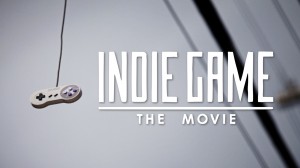 Swirsky and Pajot did corporate commercial work together for five years and that eventually blossomed into doing their first feature. “We thought it would take one year, but it ended up taking two. I can’t imagine working another way, we have a wonderful overlapping and complimentary skill set, ” said Pajot. “We both edited this film, we both shot this film. It creates this really fluid organic way of working. It’s kind of the result of 5 or 6 years of working together. I don’t think you could get a two person team doing an independent film working like we did on day one. It’s stressful at times but the benefits are absolutely fantastic, ” said Swirsky.
Swirsky and Pajot did corporate commercial work together for five years and that eventually blossomed into doing their first feature. “We thought it would take one year, but it ended up taking two. I can’t imagine working another way, we have a wonderful overlapping and complimentary skill set, ” said Pajot. “We both edited this film, we both shot this film. It creates this really fluid organic way of working. It’s kind of the result of 5 or 6 years of working together. I don’t think you could get a two person team doing an independent film working like we did on day one. It’s stressful at times but the benefits are absolutely fantastic, ” said Swirsky.
According to Swirsky, Kickstarter covered 40% of the budget. “We used it to ‘kickstart’, we asked for $15000 on our first campaign which we knew would not make the film, but it really got things going. The rest of the budget was us, personal savings.” The team used Kickstarter twice; the first in 2010 asking for $15,000 and ended up with $23,341 with 297 backers. On the second campaign in 2011, they asked for $35,000 and raised $71,335 with 1,559 backers.
The hard work, dedication, and talent paid off. Indie Game: The Movie was selected to premiere in the World Documentary Competition section at the 2012 Sundance Film Festival winning Pajot and Swirsky the World Cinema Documentary Film Editing Award . “[Sundance] speaks to the independent spirit. It’s kind of the best fit, the dream fit for the film. Just being a filmmaker you want to premiere your film at Sundance. That’s where you hear about your heroes,” noted Swirsky. “Never before in our entire careers have we felt so incredibly supported…They know how to treat you right and not just logistics, it’s more ‘we want to help you with this project and help you next time.’ It was overwhelming because we’ve never had that. We’ve just never been exposed that,” interjected Pajot
They hired a sales agent upon their acceptance into Sundance and the film generated tons of buzz before it arrived at the festival resulting in a sales frenzy. The filmmakers wanted a simultaneous worldwide digital release, but theatrical distributors weren’t willing to give up digital rights so they opted for a self release. “There were a lot of offers, they approached us to purchase various rights. We felt we needed to get it out fairly quickly and in the digital way. A lot of the deals we turned down were in a little more of the traditional route. None of them ended up being a great fit,” said Pajot.
Several people were stunned when this indie doc about indie videogame developers opted to sell their film for remake rights to Scott Rudin and HBO. Pajot explained, “He saw the trailer and reached out a week or so before Sundance. That was sort of out of left field because it wasn’t something we were pursuing.” Swirsky added, “They optioned to potentially turn the concept into a TV show about game development…As a person who watches stuff on TV, I want this to exist. I want to see what these guys do with it.” The deal still left the door open for a more typical theatrical release. However that was only the start of their plan.
“We had spoken to Gary Hustwit (Helvetica). We sort of have an understanding of how he organized his own tours. We had to make our decision whether that was something we wanted to utilize. Five days after Sundance, we decided we would and were on the road 2 weeks after… Before Sundance this was how we envisioned rolling out…[We looked at] Kevin Smith and Louis C.K. and what they’re doing. We are not those guys and we don’t have that audience, but knowing core audience is out there, doing this made sense,” said Swirsky.
They proceeded to go on a multi-city promotional tour starting with seven dates and so far they have had 15 special events screenings of which 13 were sold out! This is separate from 37 theaters across Canada doing a one night only event. They also settled on a small theatrical release in NYC and LA. When talking about the theaters and booking, they said theaters saw the sellout screenings and that prompted interest despite the fact that the film was in digital release. They accomplish all of this with a thrifty mindset. “P&A was not a budgetary item we put aside and if an investment was required, we would dip into pre orders. We didn’t put aside a marketing budget for it,” said Swirsky. Regarding the pre order revenue, they sold a cool $150,000 in DVD pre-orders in the lead up to release of the film. From this money, they funded their theatrical tour.
While the theatrical release was small, it generated solid enough numbers to get held over in multiple cities and provided for vital word of mouth that will ultimately make the film profitable. The grosses were only reported for their opening weekend, but they continued to pack the houses in later weeks.”I don’t look back at the box office. The tour was more profitable than the theatrical…They both have the benefits, having theatrical it gets a broader audience. It was more a commercial thing than box office,” said Swirsky. “We are still getting inquiries from theaters. They still want to book it despite the fact it’s out there digitally,” said Pajot. “We had this sort of hype machine happening. We didn’t put out advertising. Everything was through our mailing that started with the 300 on our first Kickstarter and through Twitter,” said Swirsky. Now the team has over 20,000 people on their mailing list and over 10,000 Twitter followers. In order to keep this word of mouth and enthusiasm going, the filmmakers released 88 minutes of exclusive content – most of which didn’t make the final cut – to their funders, took creative suggestions from their online forum and sent out updates on the games the subjects of their film were developing over the course of the two years the film was in production.
Following the success the film has enjoyed in various settings, Indie Game: The Movie premiered on three different digital distribution platforms. If you were to try and guess what they were though, you would most likely only get one right. While, it is available on the standard iTunes, the other two means of access are much more experimental and particularly appropriate for this doc.
It is only the second film to be distributed by VHX as a direct DRM-free download courtesy of their, ‘VHX For Artists‘ platform. Finally, this film is reaching gamers directly through Steam which is a video game distribution platform run by Valve. This sterling doc is also only the second film to be sold through the video game service, where it was able to be pre-ordered for $8.99 as opposed to the $9.99 it costs across all platforms. This is perhaps the perfect example of the changing landscape of independent film distribution. Every film has a potential niche and most of these can arguably be reached more effectively through means outside the standard distribution model. Why should a fan of couponing have to go through hundreds of films on Netflix before even finding out a documentary about couponing exists, when it could be promoted on a couponing website?
As they are going into uncharted territory, both Pajot and Swirsky avoided making any bold predictions.”It’s just wait and see. It’s an experiment because we’re the first movie on Steam. We’re really interested to look at and talk about in the future. I don’t want to make predictions…I do think documentary lends itself to that kind of marketing though. We’re trying to not just be niche but there is power in that core audience. They are very easy to find online,” said Swirsky.
Just because they are pursuing a bold strategy doesn’t mean they were any less cost conscious. “The VHX stuff, it was a collaboration, so there were no huge costs. Basically subtitles, a little publicity costs from Von Murphy PR and Strategy PR who helped us with theatrical. Those guys made sense to bring on,” said Pajot. “A lot of our costs were taken up by volunteers. If they help us do subtitles, they can have a ticket event, a screening in their country,” added Swirsky.
They also note that a large amount of their profit has been in pre-orders. 10,000 people have pre-ordered one of their three DVD options priced at $9.99, $24.99 and a special edition DVD for $69.99 tied with digital. While the film focused on a select few indie game developers, they interviewed 20 different developers and the additional footage is part of the Special Edition DVD/Blu-Ray. That might explain why it’s their highest seller.
All this doesn’t mean that any of the dozens of other options are no longer usable. Quite the contrary, they have also taken advantage of the Sundance Artist Services affiliations to go on a number of more traditional digital sites. Increased views of a film even if on non traditional platforms can mean increased web searches and awareness and could be used to drive up sales on mainstay platforms.
The real winner though is ultimately the audience. For the majority of the world that doesn’t go to Sundance or Cannes each year, this is how they can discover small films that were made with them in mind. The HBO deal aside, this is bound to be one incredibly profitable documentary that introduces a whole new crowd to quality art-house cinema. “We are still booking community screenings. If people want to book, they can contact us…We are thinking maybe we might do another shorter tour at some point,” said Pajot.
Here’s to the independent film spirit, alive and well.
Update Feb 2013: The creators of Indie Game have written their own case study discussing the many tools and techniques they used. Head over to their website for the full study.
Orly Ravid August 16th, 2012
Posted In: Digital Distribution, Distribution, DIY, Film Festivals, iTunes, Marketing, Publicity, Theatrical
Tags: crowdfunding, DIY distribution, documentary, game developers, Gary Hustwit, independent film, Indie Game, James Swirsky, Kevin Smith, Kickstarter, Lisanne Pajot, Louis C.K., self distribution, Steam, Sundance Artists Services, Sundance Film Festival, VHX, VHX for Artists
